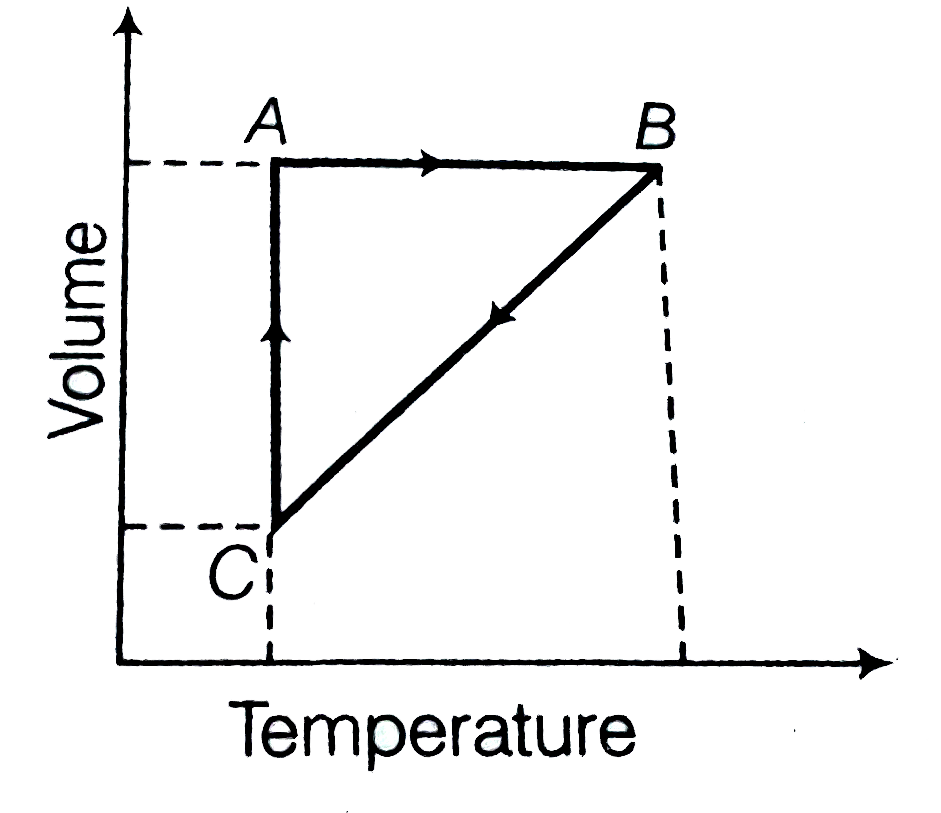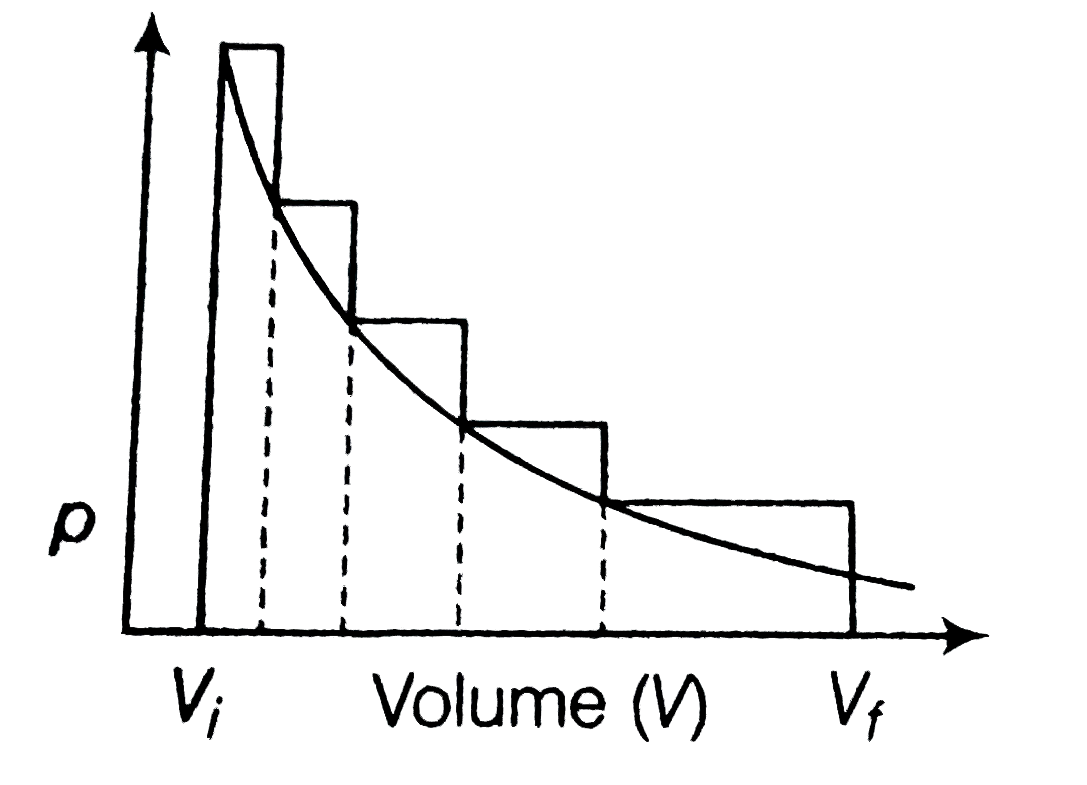Complete Solutions to Exercise 1 of chapter CHEMICAL THERMODYNAMICS AND ENERGETIC of Class 12 book with complete answers and questions
| Class 12 | CHEMISTRY |
| Chapter | CHEMICAL THERMODYNAMICS AND ENERGETIC |
| MHTCET PREP GUIDE | Exercise 1 |
| Number Of Questions | 88 |
| Academic Year | 2023-24 |
Thermodynamics is not concerned about….
View SolutionWhich of the following statement is correct?
View SolutionWhich of the following is the intensive quantity?
View SolutionA thermodynamics state function is a quantity
View SolutionDuring the adiabatic process,
View SolutionIf W is the amoung of work done by the system and q is the amount of heat supplied to the system, identify the type of the system.
View SolutionWhich of the following is an intensive property?
View SolutionWhich of the following is the correct option for the free expansion of an ideal gas under adiabatic condition?
View SolutionFive moles of a gas is put through a series of changes as shown graphically in a cyclic process. The process during `AtoB,BtoC and CtoA` respectively are

View SolutionA process in which the system does not exchange heat with the surroundings is known as
View SolutionIn which process net work done is zero ?
View SolutionWhich of the given properties depends on the manner in which a change is brought about?
(i) `DeltaE`
(ii) q
(iii) W
View SolutionWhich is correct for an endothermic reaction ?
View SolutionIf a refrigerator's door is opened then, we get
View SolutionMatch the columns for the different types of system in thermomdynamics.

View SolutionThe change in the internal energy for an isolated system at constant volume is
View SolutionIf a gas, at constant temperature and pressure expands, then its
View SolutionSelect the correct statement(s).
View SolutionWhich of the following statement/expression is/are correct?
View SolutionIn a process, `701 J` of heat is absorbed by a system and `394 J` of work is done by the system. What is the change in internal energy for the process?
View SolutionWhich of the following is the correct expression for the change in internal energy used for general case?
View SolutionThe change in internal energy for an isolated system at constannt volume is
View SolutionFor the equilibrium, `A(g)hArrB(g),DeltaH` is `-40kJ//mol`, if the ratio of the activation energies of the forward `(E_(f))` and reverse `(E_(b))` reactions is 2/3, then
View SolutionBased on the first law of thermodynamics, which one of the following statement is correct?
View SolutionSelect the correct statement/expression about the graph.

View SolutionIf 1 mole of an ideal gas exapands isothermally at `37^(@)C` from 15 L to 25L, the maximum work obtained is
View SolutionAn ideal gas expands from `10^(-3) m^(3)` to `10^(-2) m^(3)` at 300 K against a constant pressure of `10^(5) Nm^(-2)`. The workdone is
View SolutionFor an ideal gas, pressure `(p)` and interal energy `(E )` per unit volume are related as
View SolutionHow many joules of heat are absorbed when 70.0 g of water is completely vaporised at its boiling point?
View SolutionChange in internal energy when `4 kJ` of work is done on the system and `1 kJ` of heat is given out of the system is
View SolutionA system absorb `600 J` of heat and work equivalent to `300 J` on its surroundings. The change in internal energy
View SolutionSelect the correct formula about the change in enthalpy.
View SolutionSelect the correct formula for `Delta_(sol)H^(-)`.
View SolutionWhich of the following statement is correct regarding melting of ice?
View SolutionWhich of the following is not an endothermic reaction?
View SolutionGiven : `S_((s))+(3)/(2)O_(2(g))rarrSO_(3(g)+2X Kcal`
`SO_(2(s))+(1)/(2)O_(2(g))rarrSO_(3(g)+Y Kcal`
The heat of formation of `SO_(2)` is `:-`
View SolutionIn the given reaction, `Na(s)toNa(g)`
The enthalpy of atomisation is same as the
View SolutionIn the following process,
`H_(2)(g) to 2H(g), " "Delta_(H-H)H^(ө)=435.0" kJ "mol^(-1)` the enthalpy change involved is the
View SolutionEnthalpy of solution of NaOH (solid) in water is -41.6 kJ `mol^(-1)`. When NaOH is dissolved in water, the temperature of water
View Solution`DeltaU^(@)` for combustion of methane is -X kJ `mol^(-1)`. The value of `DeltaH^(@)` is
View SolutionTwo moles of an ideal gas is expanded isothermally and reversibly from 1L to 10L at 300 K. the enthalpy change (in kJ) for the process is
View SolutionFor the given reaction,
`CH_(4)(g)+2O_(2)(g)toCO_(2)(g)+2H_(2)O(l)`
Select the correct option for `Delta_(r)H`.
View SolutionWhat is `Deltan_(g)` for the combusion of 1 mole of benzene, when both reactants and products are gases at 298K
View SolutionEnthalpy change for the reaction,
`4H(g)to2H_(2)(g)` is -869.5 kJ.
The dissociation energy of H-H bonds is
View SolutionThe heat energy required to ionise the following molecules is given as follows
`N_(2)(g) overset(DeltaH_(1))to H_(2)^(o+)(g),O_(2)(g) overset(DeltaH_(2))to O_(2)^(+)(g)`
`Li_(2)(g) overset(DeltaH_(3)) to Li_(2)^(o+)(g),C_(2)(g) overset(DeltaH_(4))to C_(2)^(o+)(g)`
The correct decreasing order of energy in terms of heat
View SolutionGiven that `DeltaH_(f)(H)=218kJ//mol`, express the H-H bond energy in kcal/mol
View SolutionCalculate the difference between `DeltaE and DeltaH` for the following reaction at `27^(@)C` (in kcal)
`C("graphite")+2H_(2)(g)toCH_(4)(g)`
View SolutionThe sublimation energy of `l_(2)(s)` is 57.3 kJ/mol and the enthalpy of fusion is 15.5 kJ/mol. The enthalpy of vaporisation of `l_(2)` is
View SolutionThe enthalpy of reaction,
`H_(2)(g)+(1)/(2)O_(2)(g)to H_(2)O(g)` is `DeltaH_(1)` and that of `H_(2)(g)+(1)/(2)O_(2)(g)toH_(2)O(l)` is `DeltaH_(2)`. Then
View SolutionThe heat of neutralisation is highest for the reaction between
View SolutionThe H-H bond energy is 430 kJ `mol^(-1)` and Cl-Cl bond energy is 240 kJ `mol^(-1)`, `DeltaH and HCl` is -90kJ. The H-Cl bond energy is about
View SolutionHeat of formation off `SO_(2)` is -298 kJ. What is the heat of combustion of 4 g of S?
View SolutionThe quantity of heat measured for a reaction in a bomb calorimeter is equal to
View SolutionHeat capacity `(C_(p))` is an extensive property but specific heat (C) is an intensive property. What will be the relation between `C_(p) and C` for 1 mole of water?
View SolutionThe volume of gas is reduced to half from its original volume. The specific heat will . .. .
View SolutionThe gaseous mixture containing 2 moles of each of two ideal gases `A(C_(V),m=(3)/(2)R)`
and `B(C_(V),m=(5)/(2)R)`. Find out the average molar heat capacity at constant volume.
View SolutionCalculate the difference between `C_p and C_(V)` for 10 mole of an ideal gas.
View SolutionEntropy is
View SolutionWhich of the following statement is false regarding entropy?
View SolutionFrom an isolated system, `DeltaU=0`, what will be `DeltaS`?
View SolutionFor the reaction, `2Cl(g) to Cl_(2)(g)`, what are the signs of `DeltaH and DeltaS`?
View SolutionThe standard molar entropy of `H_(2)O(l)` is 70 `JK^(-1)mol^-1`. Standard molar entropy of `H_(2)O(s)` is
View SolutionSelect the incorrect expression from the following expressions.
View SolutionFind our the entropy change in surroudings when 1 mole of `H_(2)O(l)` is formed under standard conditions `Delta_(f)H^(ө)=-286" kJ "mol^(-1)`
View SolutionUnit of entropy is
View SolutionOne mole of which o the following has the highest entropy?
View SolutionIn a reversible process, `DeltaS_(sys)+DeltaS_("surr")` is
View SolutionAccording to second law of thermodynamics, a process (reaction) is spontaneous, if during the process
View SolutionThe second law of thermodynamics says that in a cyclic process
View SolutionWhich of the following pairs of a chemical reaction is certain to result in a spontaneous reaction?
View SolutionOne mole of a perfect gas expands isothermally to ten times of its original volume. The change in entropy is
View SolutionWhich of the following does not have zero entropy even at absolute zer0o?
`CO,CO_(2),NaCl,NO`
View SolutionIn which case, a spontaneous reaction is possible at any temperature
View Solution2 moles of ann ideal gas at `27^(@)C` are expanded reversibly from 2L to 20 L. find entropy change. (R=2 cal/mol K)
View SolutionAt `27^(@)C`, latent heat of fusion of a compound is 2930 J/mol. Entropy change during fusion is
View SolutionIn evaporation of water, `DeltaH and DeltaS` are
View SolutionWhich one of the following is correct?
View SolutionThe standard free energy change `(DeltaG^(@))` is related to equilibrium constant (K) as
View SolutionFind the value of `DeltaG^(@)` if the `DeltaH^(@)=-29.8` kcal and `DeltaS^(@)=-0.100` kcal `K^(-1)` is given at 298K.
View SolutionIf `K lt 1,0,` what will be the value of `DeltaG^(@)`?
View SolutionFind the equilibrium constant `K_(p)` in `log K_(p)` if the standard free energy change of a reaction `DeltaG^(@)=-115kJ` at 298K is
View SolutionThe equilibrium constant for a reaction is 10. what will be the value of `DeltaG^(@)`? Given, `R=8.314JK^(-1)mol^(-1),T=300K`.
View SolutionWhich of the following correctly represents the physical significance of Gibbs energy change?
View SolutionAt 1 atm pressure, `DeltaS=75JK^(-1)mol^(-1),DeltaH=30kJ" "mol^(-1)`, the temperature of the reaction at equilibrium is
View SolutionUnder which of the following sets of conditions, `DeltaG` is always negative?
View SolutionThe gibbs free energy for a reversible reaction at equilibrium is
View SolutionConsider the reaction,
`C(s)+O_(2)(g)toCO_(2)(g)+393.5kJ`, the signs of `DeltaH,DeltaS and DeltaG` respectively are
View SolutionThe free energy for a reaction having `DeltaH=31400cal,DeltaS=32" cal "K^(-1)mol^(-1)` at `1000^(@)C` is
View Solution
Exercise 1 questions and complete solutions for chapter CHEMICAL THERMODYNAMICS AND ENERGETIC of MHTCET PREVIOUS YEAR PAPERS AND PRACTICE PAPERS of Class 12